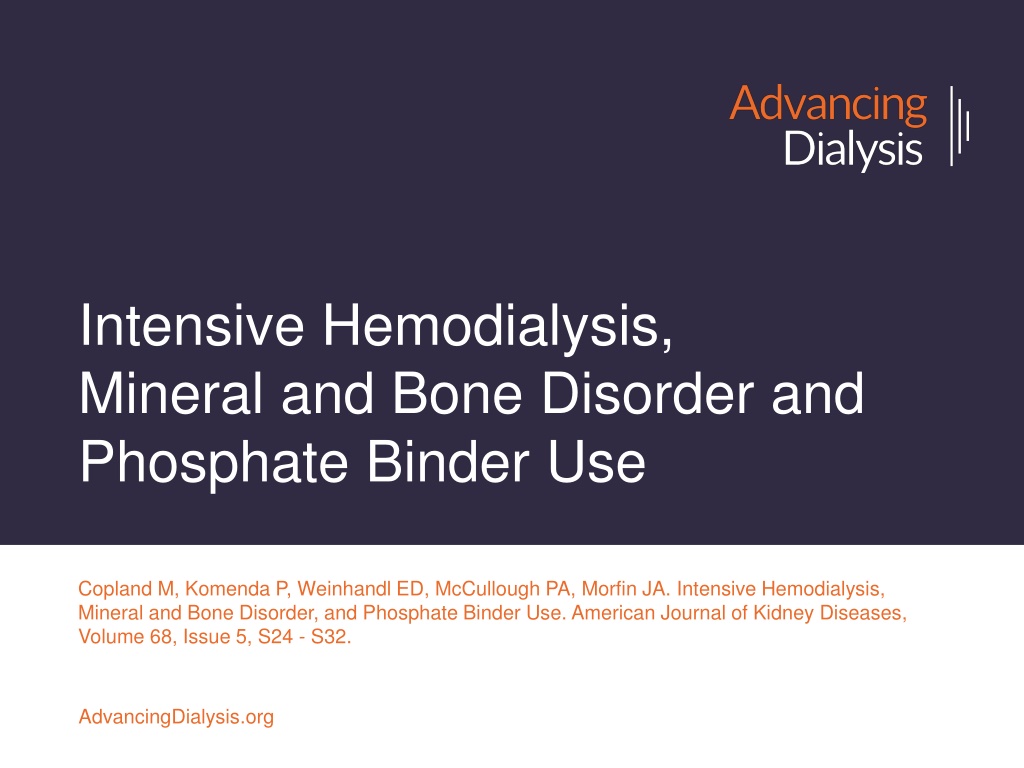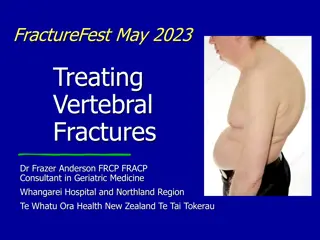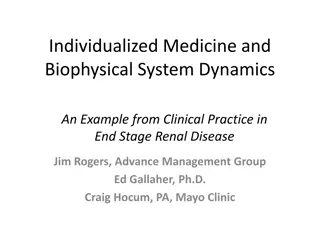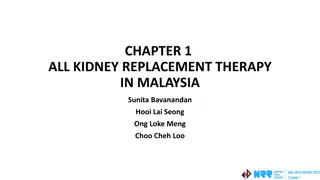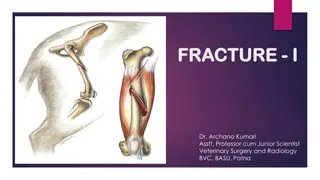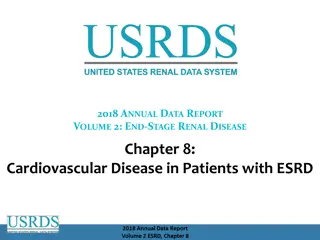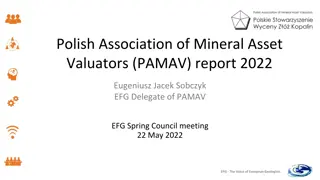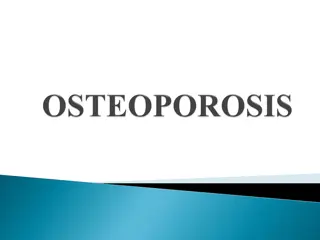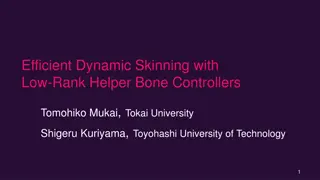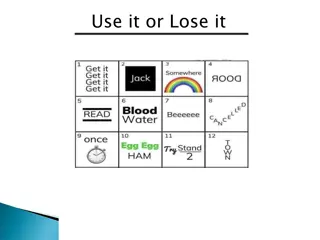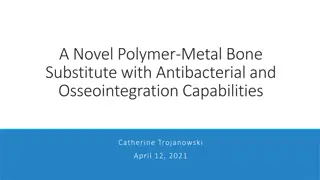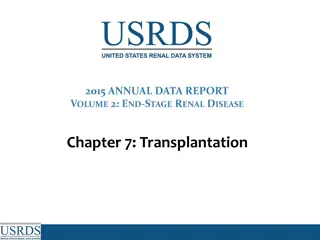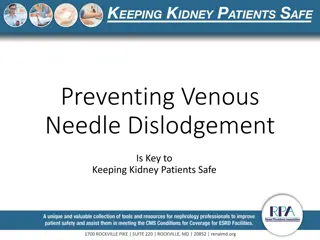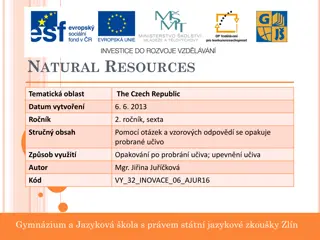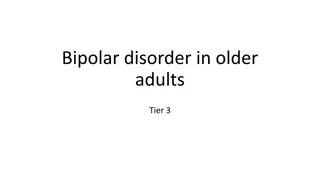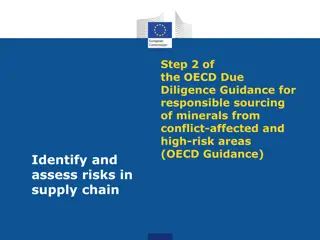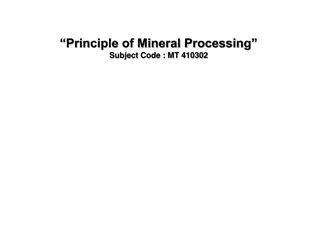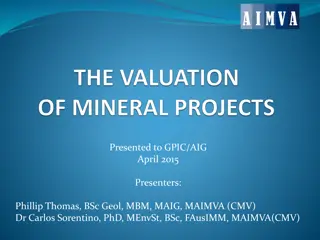Management of Mineral and Bone Disorder in Intensive Hemodialysis Patients
Serum phosphorus levels play a crucial role in cardiovascular risk among hemodialysis patients. Despite relatively unchanged levels over the years, a significant percentage of patients still have elevated phosphorus levels, posing cardiovascular risks. Proper adherence to phosphate binders is essential, but costs can be substantial, especially with Medicare Part D expenditures exceeding $1 billion annually. Studies also show reductions in serum phosphorus with specific hemodialysis approaches.
Download Presentation

Please find below an Image/Link to download the presentation.
The content on the website is provided AS IS for your information and personal use only. It may not be sold, licensed, or shared on other websites without obtaining consent from the author. Download presentation by click this link. If you encounter any issues during the download, it is possible that the publisher has removed the file from their server.
E N D
Presentation Transcript
Intensive Hemodialysis, Mineral and Bone Disorder and Phosphate Binder Use Copland M, Komenda P, Weinhandl ED, McCullough PA, Morfin JA. Intensive Hemodialysis, Mineral and Bone Disorder, and Phosphate Binder Use. American Journal of Kidney Diseases, Volume 68, Issue 5, S24 - S32. AdvancingDialysis.org
Serum phosphorus levels of 5.0 and 5.5 mg/dL have been associated with increased cardiovascular risk.1 Serum phosphorus levels have remained relatively unchanged from 2010 to 2015.2 SOURCE: US-DOPPS PRACTICE MONITOR Most recent single monthly value. Facility sample transitioned from DOPPS 4 to 5 in Jan-Apr 2012. Facility sample transitioned from DOPPS 5 to 6 in Mar-Jul 2015. 1Tentori F, Blayney MJ, Albert JM, et al. Mortality risk for dialysis patients with different levels of serum calcium, phosphorus, and PTH: the Dialysis Outcomes and Practice Patterns Study (DOPPS). Am J Kidney Dis Off J Natl Kidney Found. 2008;52(3):519-530. doi:10.1053/j.ajkd.2008.03.020. 2The DOPPS Practice Monitor. http://www.dopps.org/DPM/. Accessed November 8, 2016. AdvancingDialysis.org
In 2015, over 36% of hemodialysis patients had serum phosphorus persistently above the target range.1 An additional 15% to 20% of patients had serum phosphorus levels between 5.0 and 5.5 mg/dL, an interval associated with increased cardiovascular risk.1 CHAPTER 3, FIGURE 1:2 Distribution of 3-month mean serum phosphorus in the Dialysis Outcomes and Practice Patterns Study Practice Monitor, December 2015.1 1The DOPPS Practice Monitor. http://www.dopps.org/DPM/. Accessed May 20, 2015. 2Copland, M., Komenda, P., Weinhandl, E.D., McCullough, P.A., Morfin, J.A. Intensive hemodialysis, mineral and bone disorder, and phosphate binder use. Am J Kidney Dis. 2016;68:S24 S32. AdvancingDialysis.org
Under perfect adherence, the cost of phosphate binders to all payers would be enormous.1 Medicare Part D expenditures for phosphate binders and calcimimetics exceed $1 billion annually.2 Expenditures for phosphate binders were noticeably higher in a large dialysis provider organization that delivers integrated pharmacy services to support medication adherence.1 CHAPTER 3, FIGURE 2:3 Medicare Part D gross costs per patient-year for phosphate binders, by dialysis provider organization or class, 2011. Abbreviations: FDF, free-standing dialysis facility; HDF, hospital-based dialysis facility; SDO, small dialysis organization. 1Collins AJ, Foley RN, Chavers B, et al. US Renal Data System 2013 Annual Data Report. Am J Kidney Dis Off J Natl Kidney Found. 2014;63(1 Suppl):A7. doi:10.1053/j.ajkd.2013.11.001. 2Saran R, Li Y, Robinson B, et al. US Renal Data System 2015 Annual Data Report: Epidemiology of Kidney Disease in the United States. Am J Kidney Dis Off J Natl Kidney Found. 2016;67(3 Suppl 1):A7-A8. doi:10.1053/j.ajkd.2015.12.014. 3Copland, M., Komenda, P., Weinhandl, E.D., McCullough, P.A., Morfin, J.A. Intensive hemodialysis, mineral and bone disorder, and phosphate binder use. Am J Kidney Dis. 2016;68:S24 S32. AdvancingDialysis.org
The FHN Daily, Nocturnal and a Canadian trial of nocturnal hemodialysis reported reductions in mean serum phosphorus from baseline to follow-up.1,2 In the conventional hemodialysis group, serum phosphorus increased over time.1,2 CHAPTER 3, FIGURE 3:3 Effects of intensive versus conventional hemodialysis on serum phosphorus in the FHN Daily Trial,1 the FHN Nocturnal Trial,1 and the Canadian trial of nocturnal hemodialysis.2 Estimated treatment effects (solid dots) and associated 95% confidence intervals (solid lines) are displayed at the bottom. 1Daugirdas JT, Chertow GM, Larive B, et al. Effects of frequent hemodialysis on measures of CKD mineral and bone disorder. J Am Soc Nephrol JASN. 2012;23(4):727-738. doi:10.1681/ASN.2011070688. 2Culleton BF, Walsh M, Klarenbach SW, et al. Effect of frequent nocturnal hemodialysis vs conventional hemodialysis on left ventricular mass and quality of life: a randomized controlled trial. JAMA. 2007;298(11):1291-1299. doi:10.1001/jama.298.11.1291. 3Copland, M., Komenda, P., Weinhandl, E.D., McCullough, P.A., Morfin, J.A. Intensive hemodialysis, mineral and bone disorder, and phosphate binder use. Am J Kidney Dis. 2016;68:S24 S32. -0.46 mg/dL -1.11 mg/dL -1.5 mg/dL AdvancingDialysis.org
In the FHN Daily Trial, mean estimated pill burden per day declined from 7.17 pills per day at baseline to 5.70 after 10 to 12 months of follow-up.1 CHAPTER 3, FIGURE 4:2 Mean equivalent phosphorus binding dose for intensive versus conventional hemodialysis in the FHN Daily Trial.1 Dashed bars span one standard deviation above and below the mean. 20% DECREASE 10-12 MONTHS 1Daugirdas JT, Chertow GM, Larive B, et al. Effects of frequent hemodialysis on measures of CKD mineral and bone disorder. J Am Soc Nephrol JASN. 2012;23(4):727-738. doi:10.1681/ASN.2011070688. 2Copland, M., Komenda, P., Weinhandl, E.D., McCullough, P.A., Morfin, J.A. Intensive hemodialysis, mineral and bone disorder, and phosphate binder use. Am J Kidney Dis. 2016;68:S24 S32. AdvancingDialysis.org
In the FHN Nocturnal Trial, the percentage of patients using any phosphate binders decreased with intensive hemodialysis, from 97% at baseline to 27% after 10 to 12 months.1 CHAPTER 3, FIGURE 5:2 Distribution of equivalent phosphorus binding dose (EPBD) for intensive versus conventional hemodialysis in the FHN Nocturnal Trial.1 1Daugirdas JT, Chertow GM, Larive B, et al. Effects of frequent hemodialysis on measures of CKD mineral and bone disorder. J Am Soc Nephrol JASN. 2012;23(4):727-738. doi:10.1681/ASN.2011070688. 2Copland, M., Komenda, P., Weinhandl, E.D., McCullough, P.A., Morfin, J.A. Intensive hemodialysis, mineral and bone disorder, and phosphate binder use. Am J Kidney Dis. 2016;68:S24 S32. AdvancingDialysis.org
